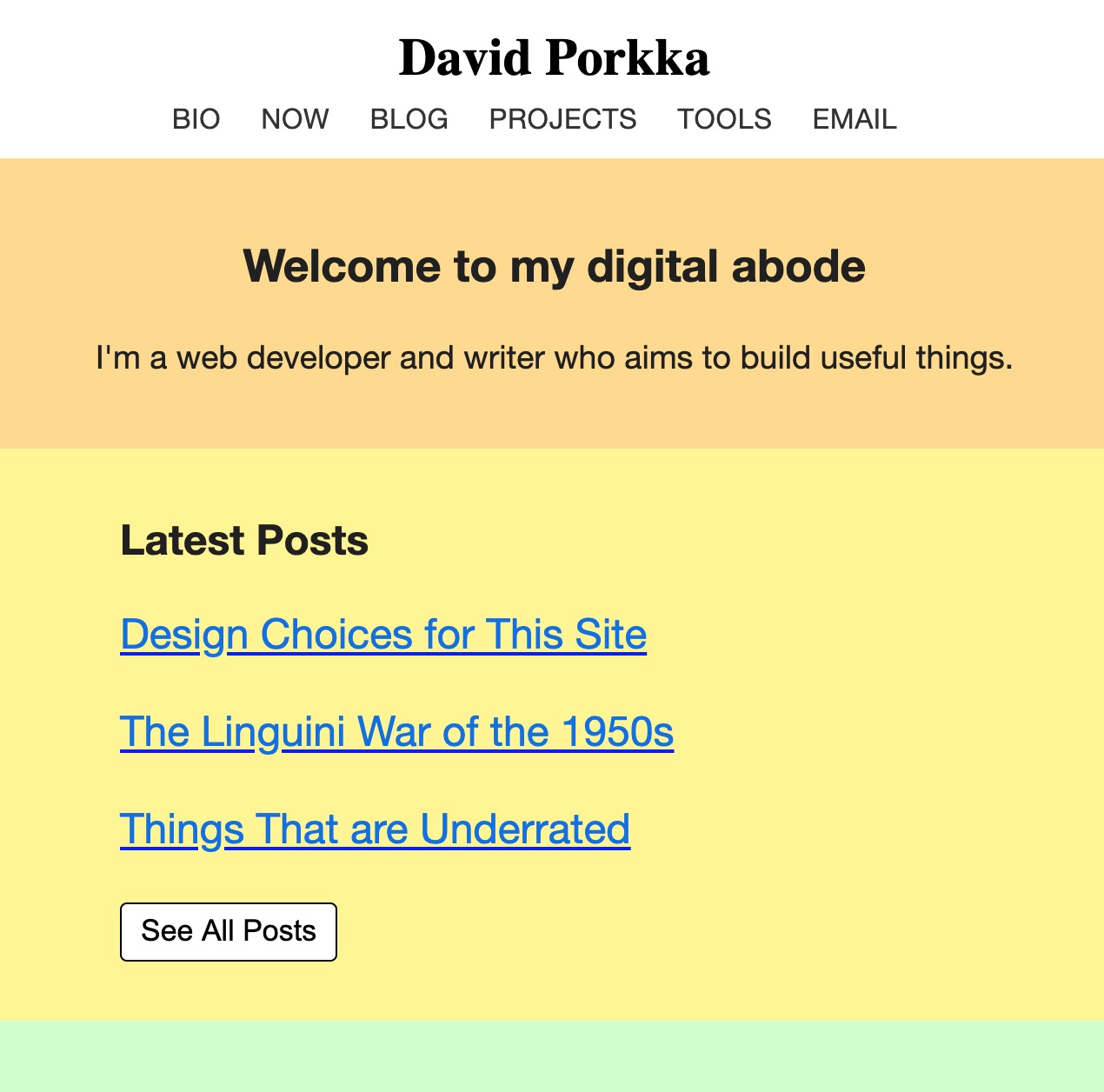This README is based on the hello-world GATSBY JS starter here https://github.com/gatsbyjs/gatsby-starter-hello-world/blob/master/README.md
This site ships with the main Gatsby configuration files you might need to get up and running blazing fast with the blazing fast app generator for React.
To see it in action, visit https://minimal-gatsby.netlify.app/
-
Lightweight - is only 168.2 kb, and can be reduced to below 100kb by removing image processing package.
-
Fast - loads in .3 seconds on desktop and .9 seconds on mobile. Rated 100 for both mobile and desktop on Lighthouse.
-
Future-proof - site can function without JS with little change in function.
-
Unopinionated styles - no external CSS stuff besides SASS
-
Create a Gatsby site.
Use the command line to create a new site, referencing this project.
# create a new Gatsby site using the minimal-gatsby-blog template gatsby new my-new-blog https://github.com/dporkka/minimal-gatsby-blog -
Start developing.
Navigate into your new site’s directory and start it up.
cd my-new-blog/ gatsby developremove the
robots.txtfile to allow search engines to index your site -
Open the source code and start editing!
Your site is now running at
http://localhost:8000!Note: You'll also see a second link:
http://localhost:8000/___graphql. This is a tool you can use to experiment with querying your data. Learn more about using this tool in the Gatsby tutorial.Open the
my-new-blogdirectory in your code editor of choice and editsrc/pages/index.js. Save your changes and the browser will update in real time!
A quick look at the top-level files and directories you'll see in a Gatsby project.
.
├── node_modules
├── src
├── .gitignore
├── .prettierrc
├── gatsby-browser.js
├── gatsby-config.js
├── gatsby-node.js
├── gatsby-ssr.js
├── LICENSE
├── package-lock.json
├── package.json
└── README.md
-
/node_modules: This directory contains all of the modules of code that your project depends on (npm packages) are automatically installed. -
/src: This directory will contain all of the code related to what you will see on the front-end of your site (what you see in the browser) such as your site header or a page template.srcis a convention for “source code”. -
.gitignore: This file tells git which files it should not track / not maintain a version history for. -
.prettierrc: This is a configuration file for Prettier. Prettier is a tool to help keep the formatting of your code consistent. -
gatsby-browser.js: This file is where Gatsby expects to find any usage of the Gatsby browser APIs (if any). These allow customization/extension of default Gatsby settings affecting the browser. -
gatsby-config.js: This is the main configuration file for a Gatsby site. This is where you can specify information about your site (metadata) like the site title and description, which Gatsby plugins you’d like to include, etc. (Check out the config docs for more detail). -
gatsby-node.js: This file is where Gatsby expects to find any usage of the Gatsby Node APIs (if any). These allow customization/extension of default Gatsby settings affecting pieces of the site build process. -
gatsby-ssr.js: This file is where Gatsby expects to find any usage of the Gatsby server-side rendering APIs (if any). These allow customization of default Gatsby settings affecting server-side rendering. -
LICENSE: Gatsby is licensed under the MIT license. -
package-lock.json(Seepackage.jsonbelow, first). This is an automatically generated file based on the exact versions of your npm dependencies that were installed for your project. (You won’t change this file directly). -
package.json: A manifest file for Node.js projects, which includes things like metadata (the project’s name, author, etc). This manifest is how npm knows which packages to install for your project. -
README.md: A text file containing useful reference information about your project. -
robots.txt: A text file that prevents search engines from indexing this site. Delete this file after you're ready to show your site to the world.
Looking for more guidance? Full documentation for Gatsby lives on the website. Here are some places to start:
-
For most developers, we recommend starting with our in-depth tutorial for creating a site with Gatsby. It starts with zero assumptions about your level of ability and walks through every step of the process.
-
To dive straight into code samples, head to our documentation. In particular, check out the Guides, API Reference, and Advanced Tutorials sections in the sidebar.

